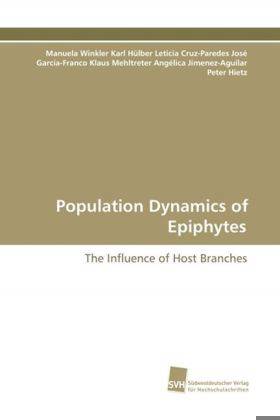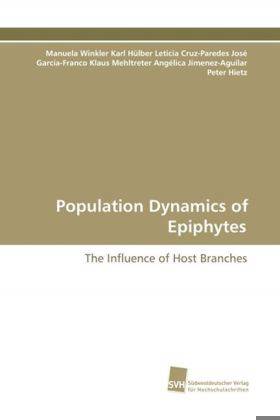
- Afhalen na 1 uur in een winkel met voorraad
- Gratis thuislevering in België vanaf € 30
- Ruim aanbod met 7 miljoen producten
- Afhalen na 1 uur in een winkel met voorraad
- Gratis thuislevering in België vanaf € 30
- Ruim aanbod met 7 miljoen producten
Zoeken
Population Dynamics of Epiphytes
The Influence of Host Branches
Manuela Winkler, Karl Hülber, Leticia Cruz-Paredes
Paperback | Duits
€ 53,45
+ 106 punten
Omschrijving
Epiphytes need to balance the chances and risks of longterm survival and those of colonizing new branches in their high-stress and high-risk canopy habitats. Populations of three epiphytic orchids and five bromeliads were declining except for the most xeric species. High seedling mortality had only little effects on population growth rates, which were most sensitive to the survival of large stages. Branch characteristics related to light affected time to germination, survival rates and the probability of growing from the pre-reproductive to the reproductive stage. The breeding systems of the epiphytes investigated ranged from obligatory outcrossing to facultatively self-pollinating. Species growing on small and less stable branches had a higher fruit set through self-pollination or other strategies, which may be of importance to compensate the high disturbance on these substrates. However, high fruit set and substantial herbivory in reproductive organs of several species had only a limited effect on population performance. Declining populations combined with the increasing loss of natural habitats may lead to the extinction of species, especially those restricted to closed forests.
Specificaties
Betrokkenen
- Auteur(s):
- Uitgeverij:
Inhoud
- Aantal bladzijden:
- 120
- Taal:
- Duits
Eigenschappen
- Productcode (EAN):
- 9783838102818
- Verschijningsdatum:
- 1/04/2009
- Uitvoering:
- Paperback
- Formaat:
- Trade paperback (VS)
- Afmetingen:
- 152 mm x 229 mm
- Gewicht:
- 172 g

Alleen bij Standaard Boekhandel
+ 106 punten op je klantenkaart van Standaard Boekhandel
Beoordelingen
We publiceren alleen reviews die voldoen aan de voorwaarden voor reviews. Bekijk onze voorwaarden voor reviews.











